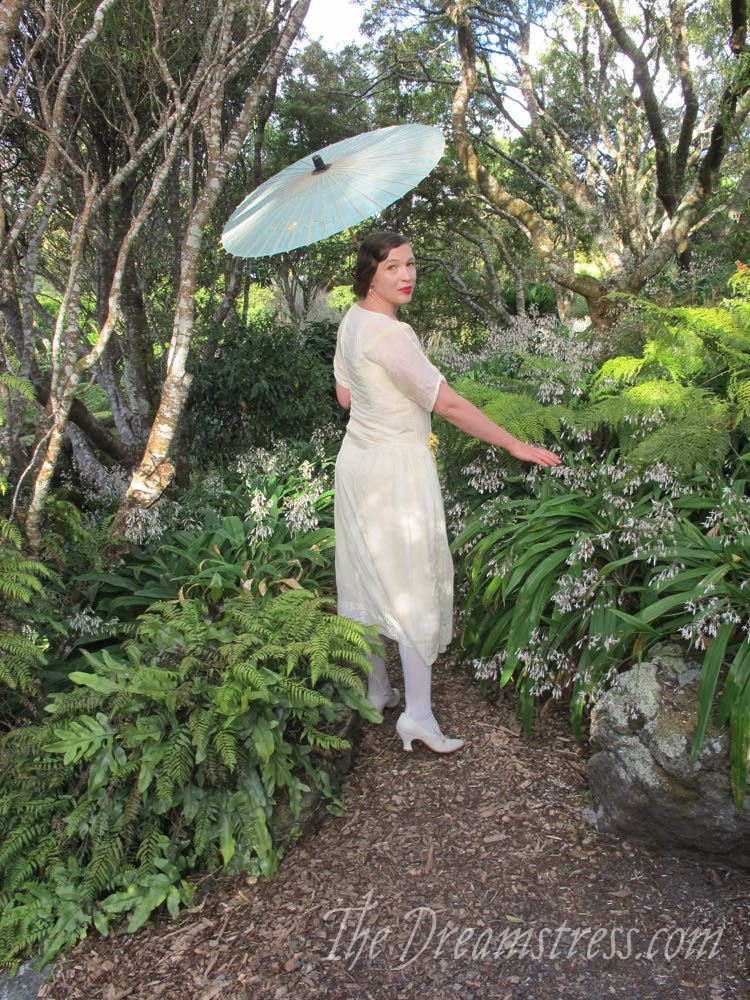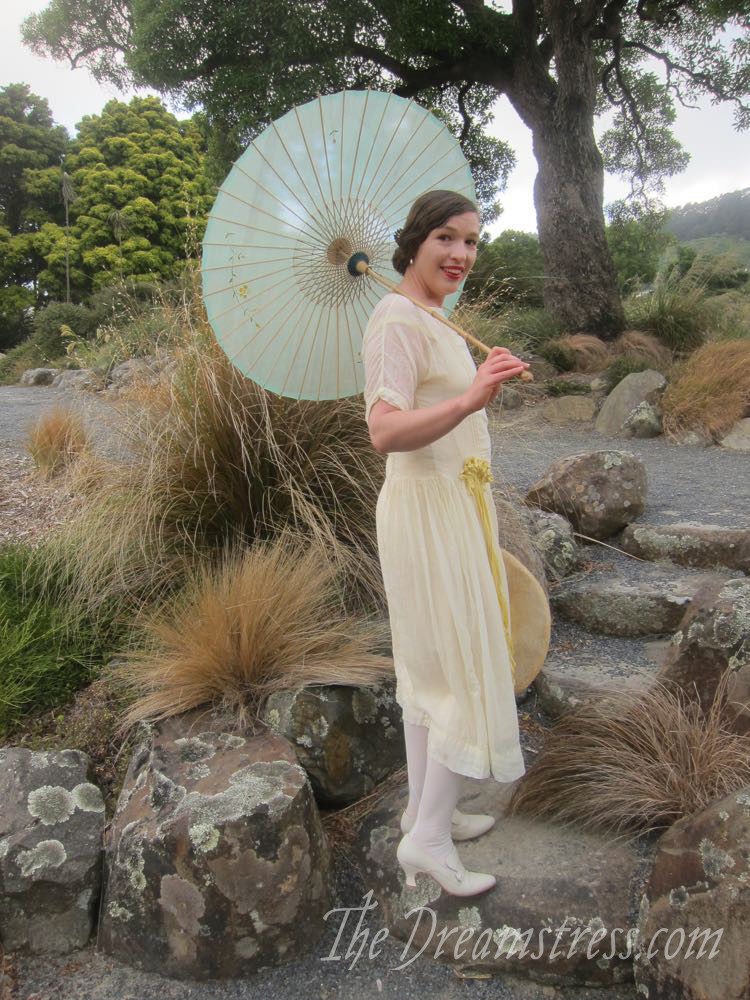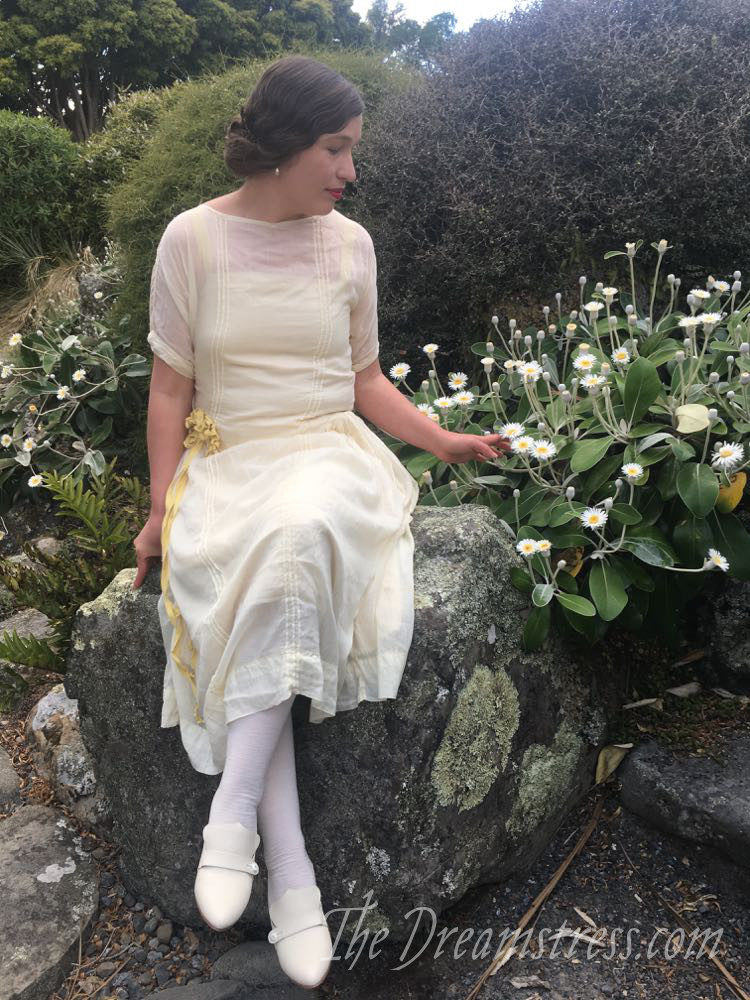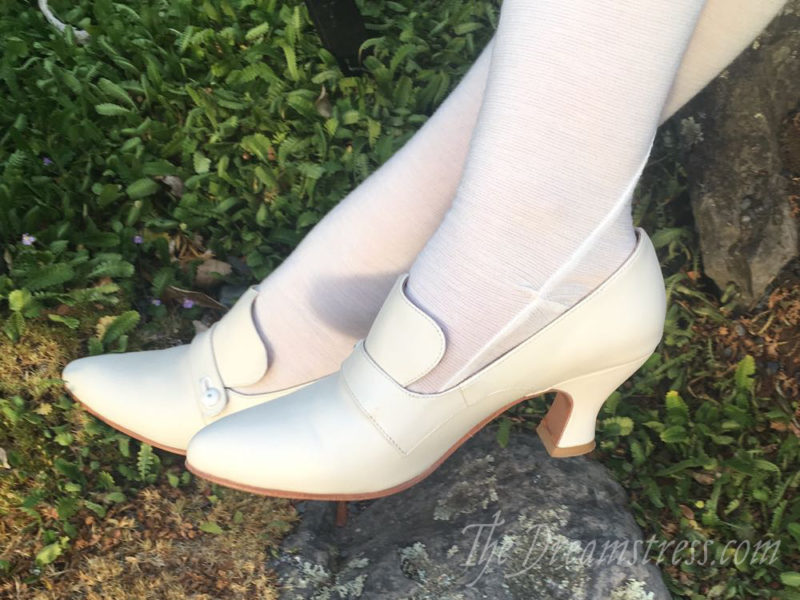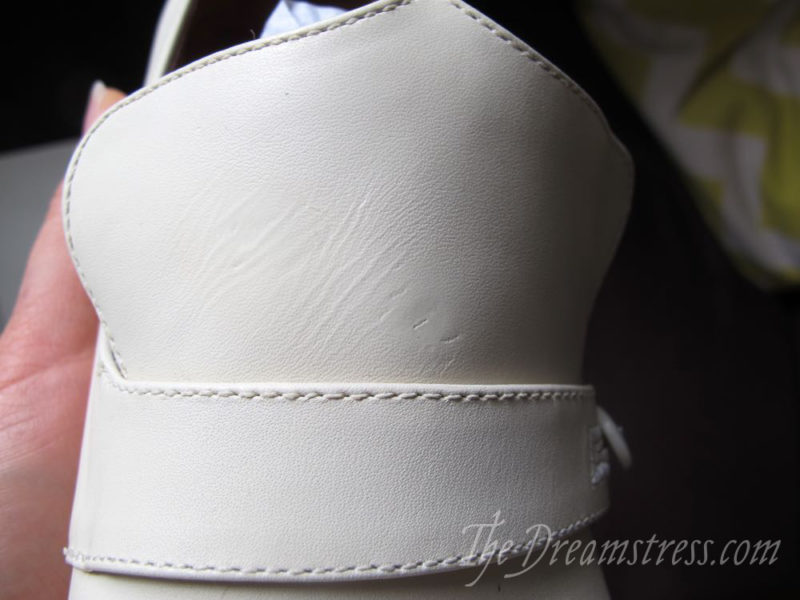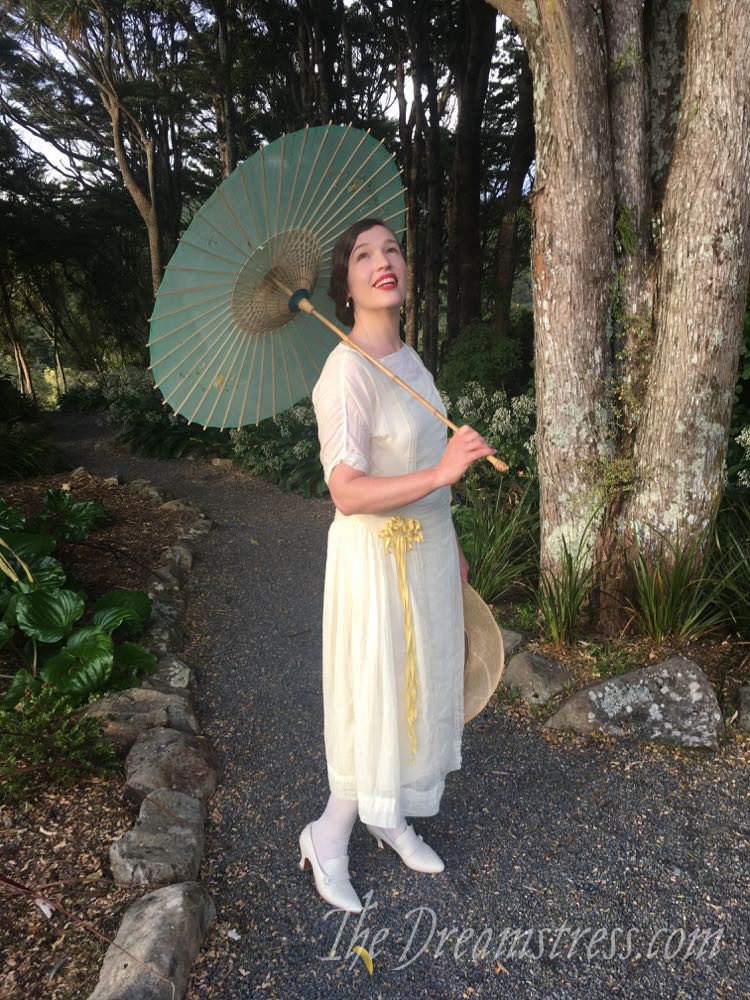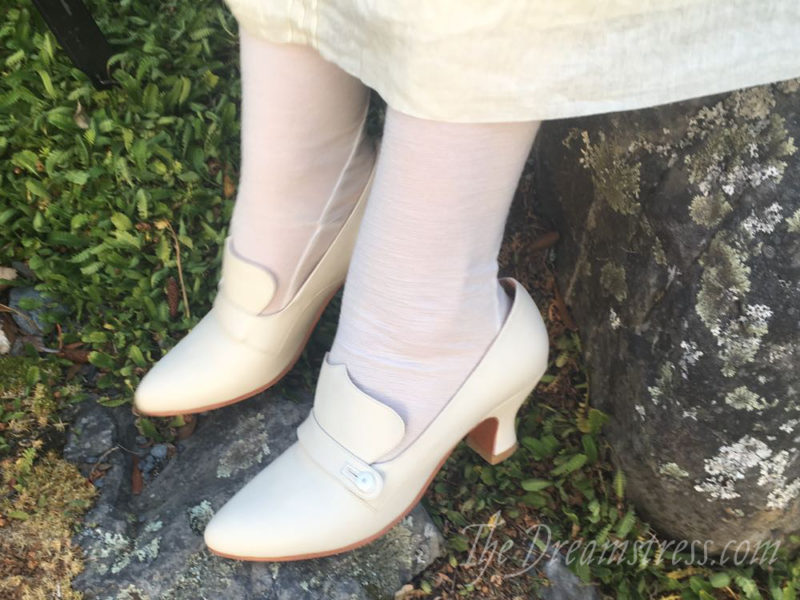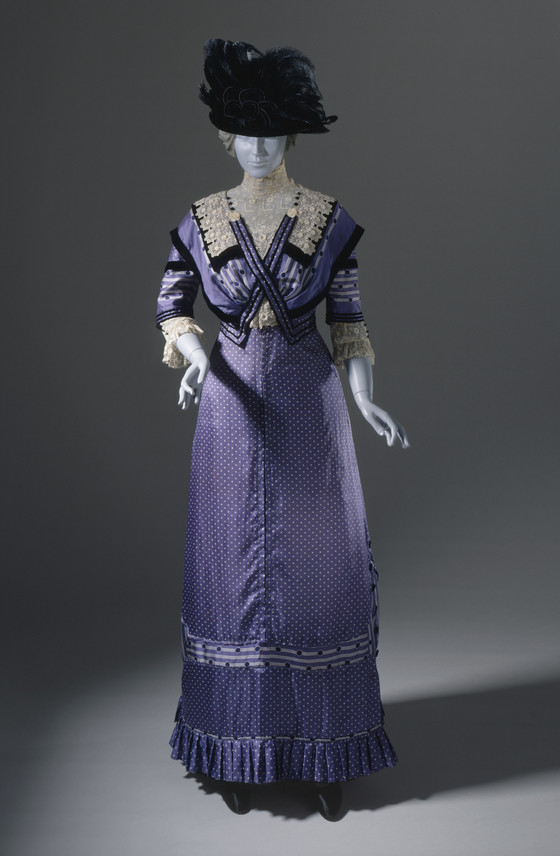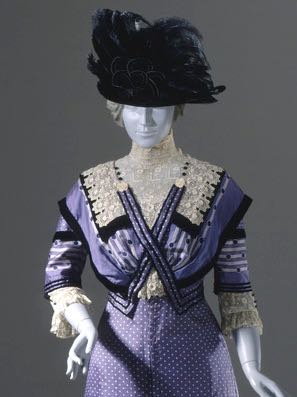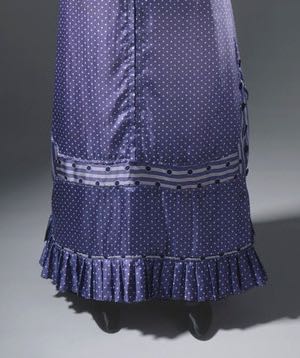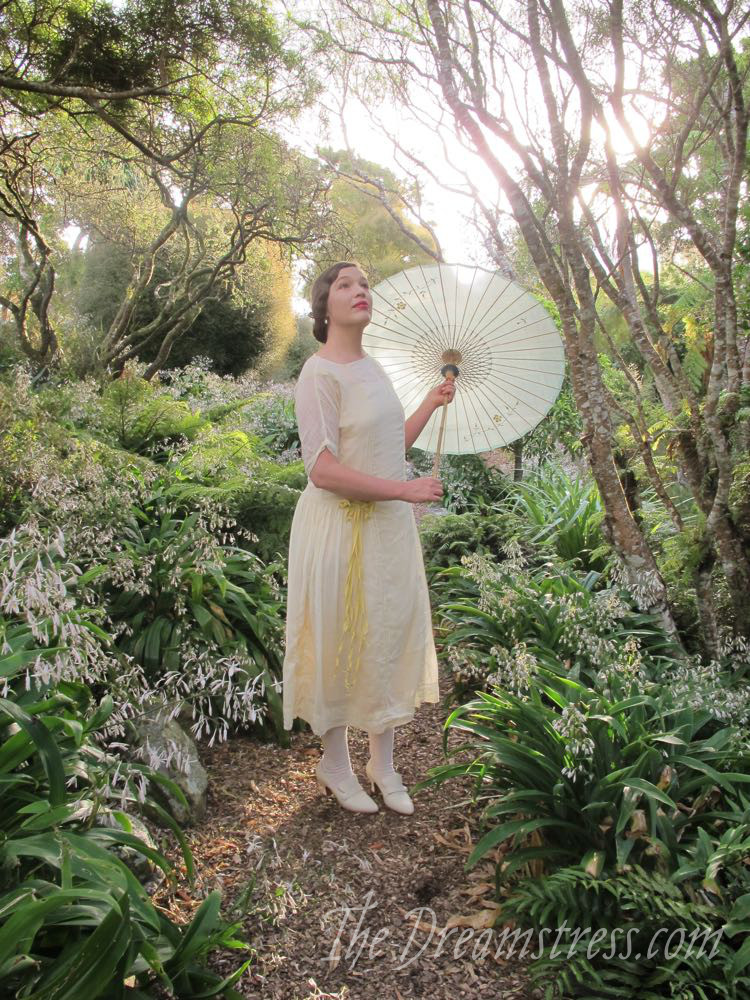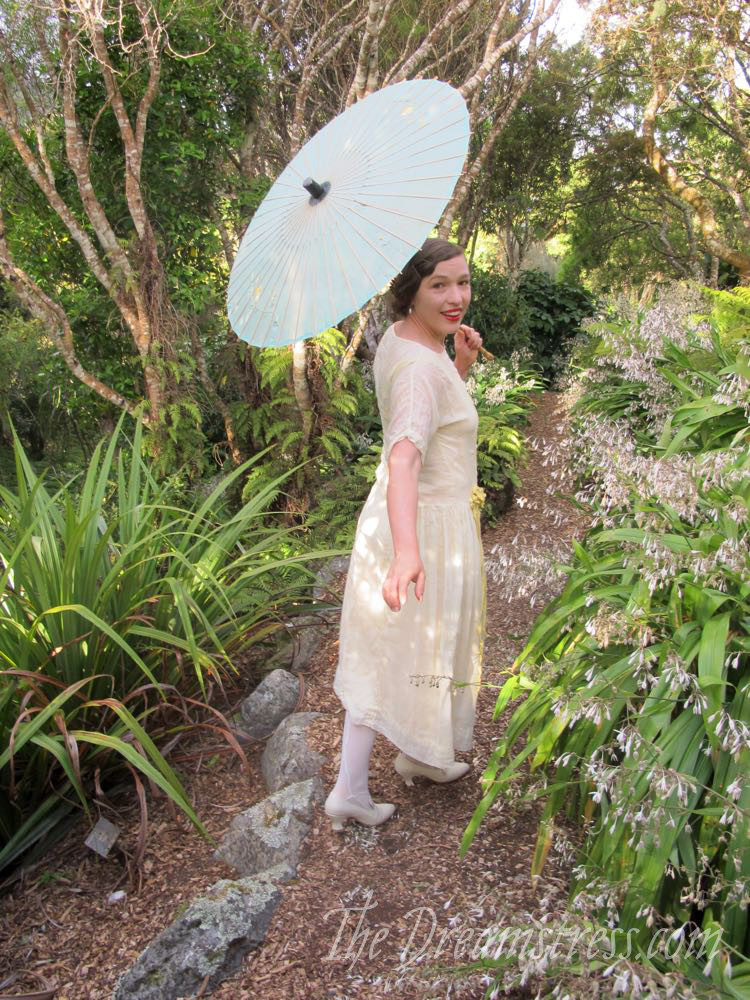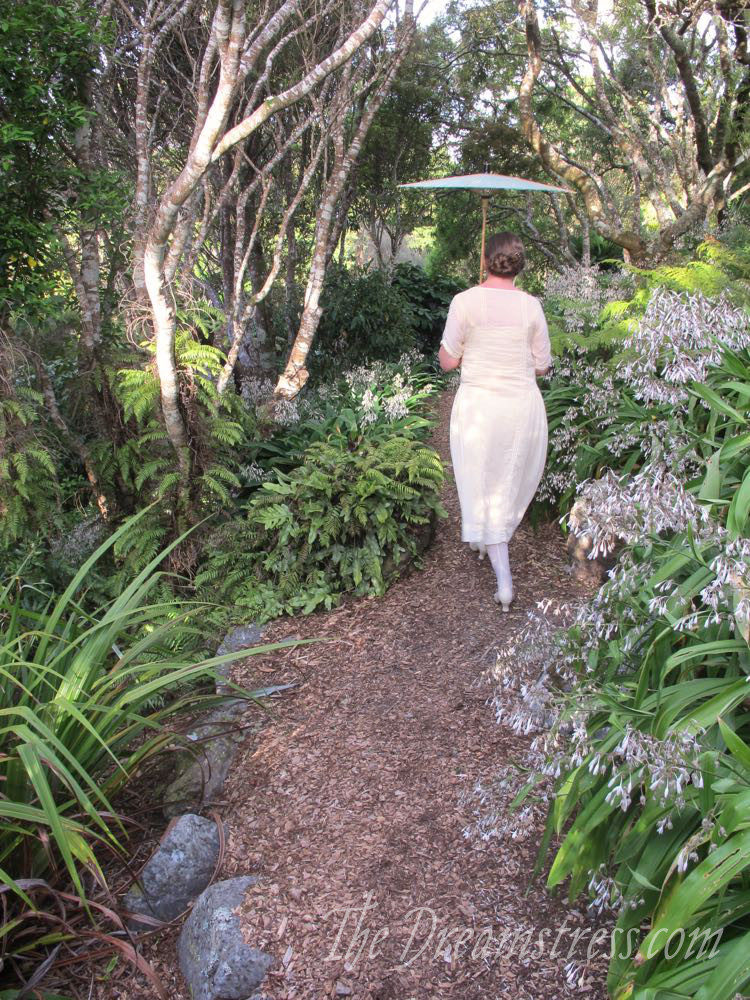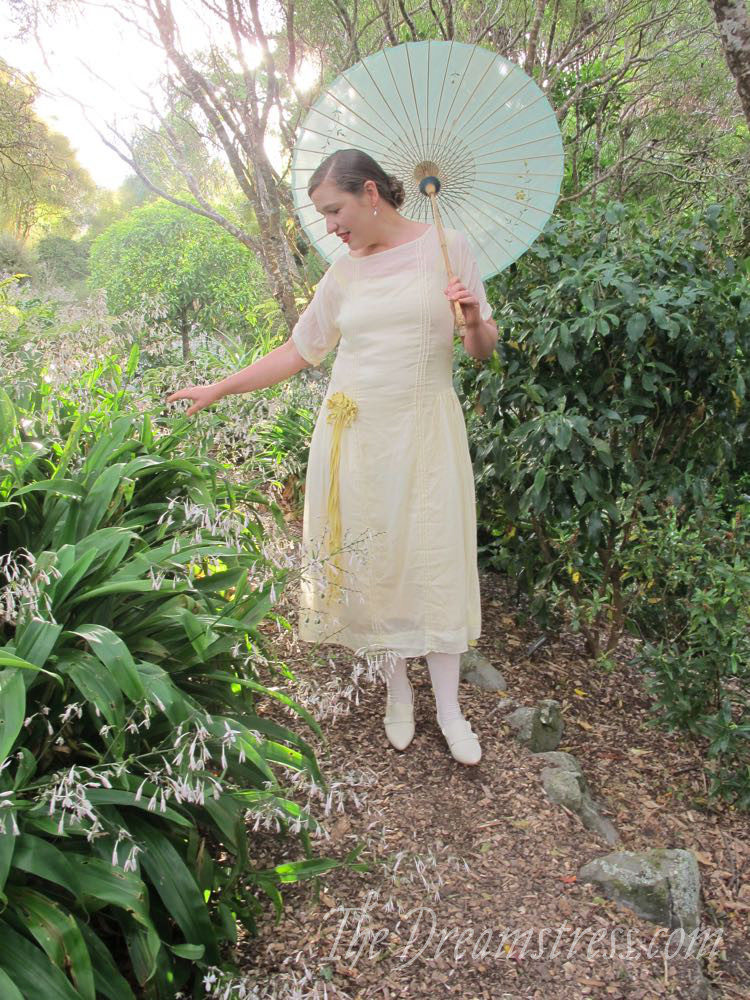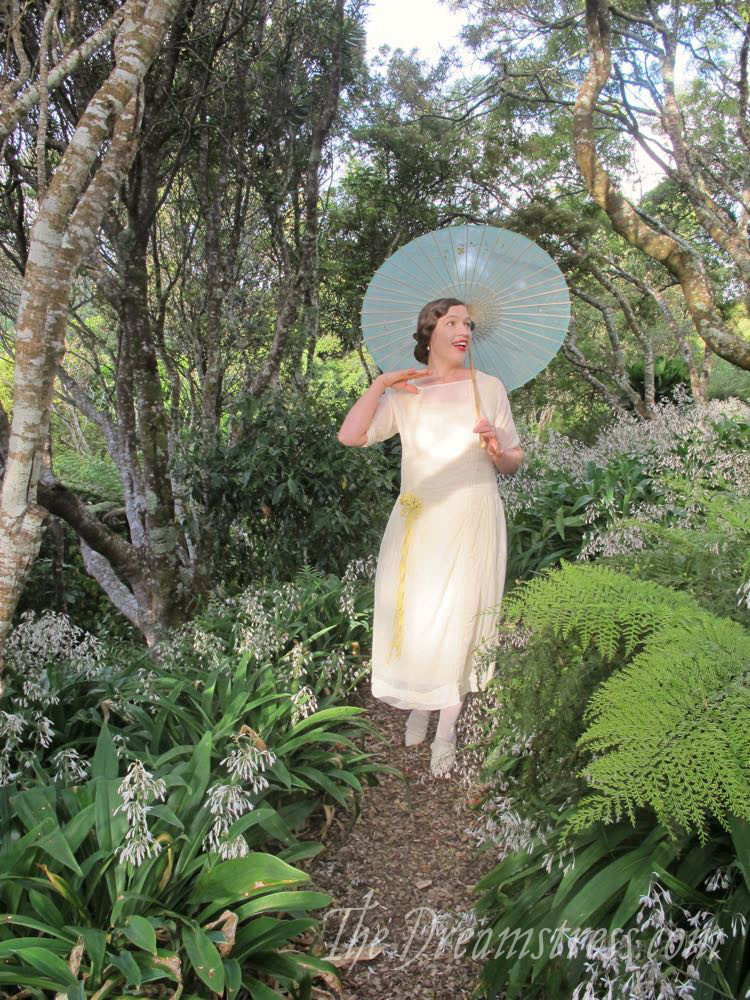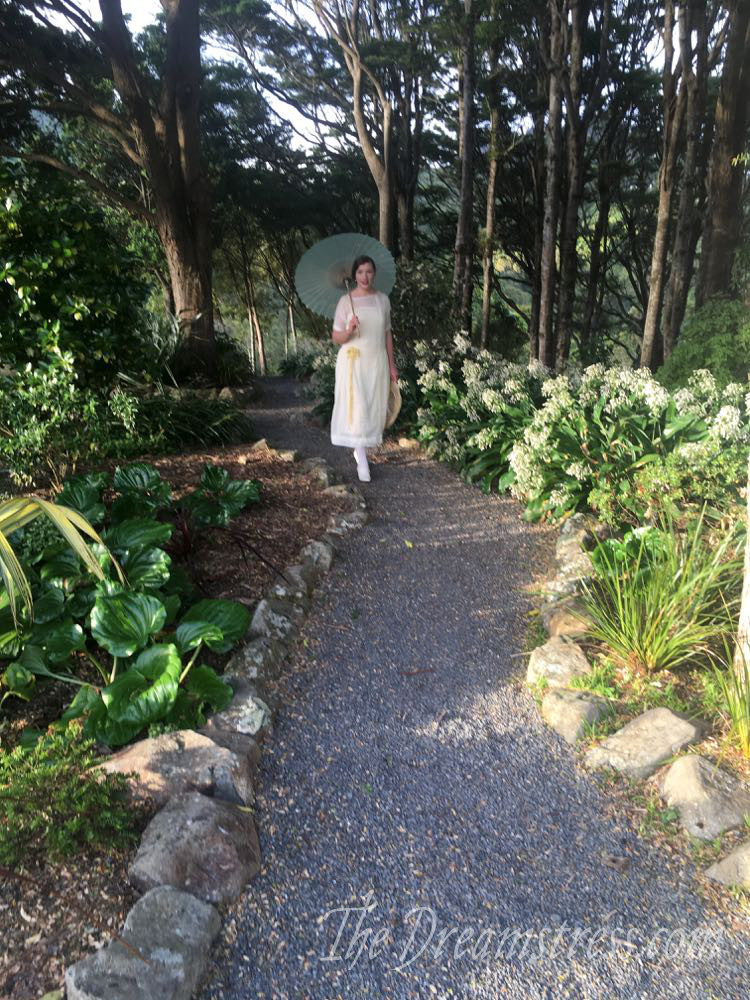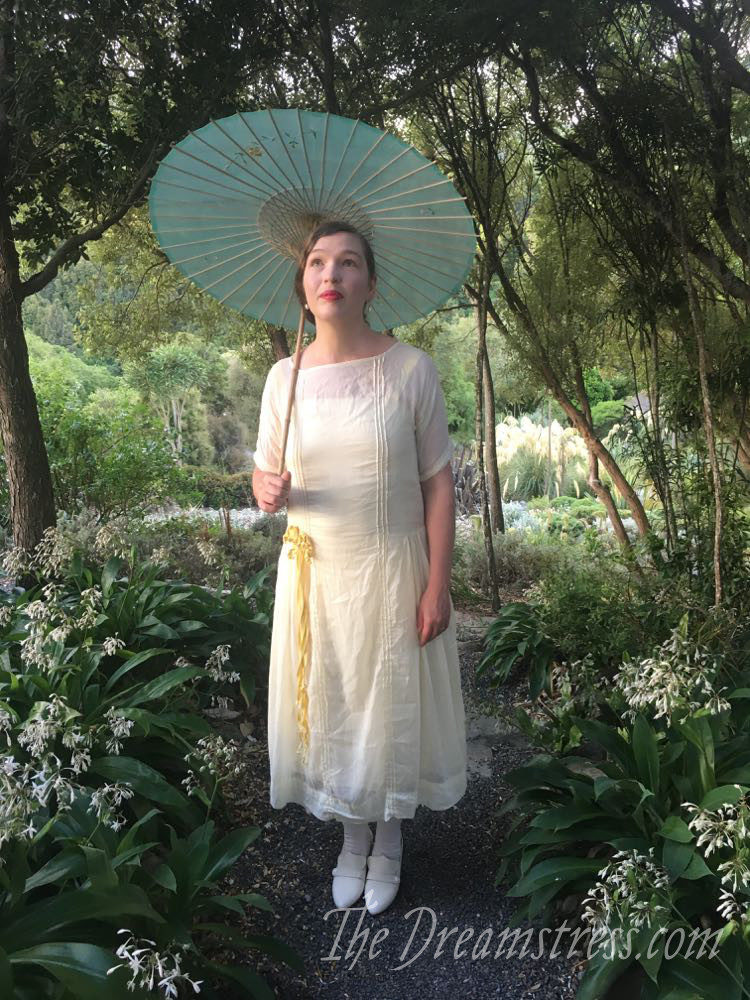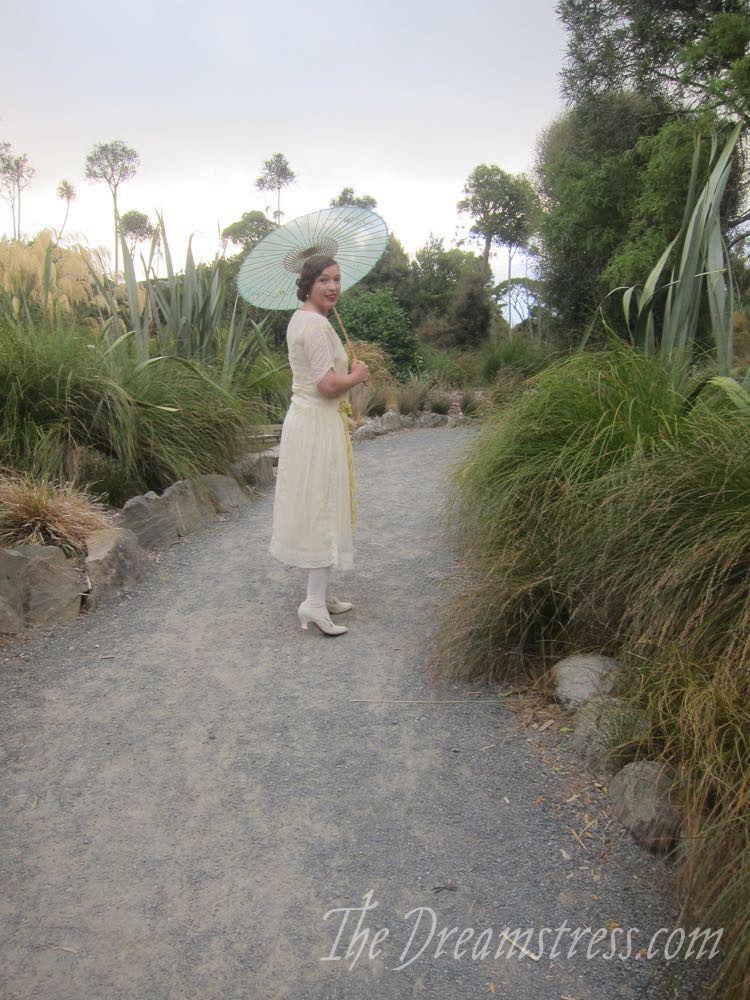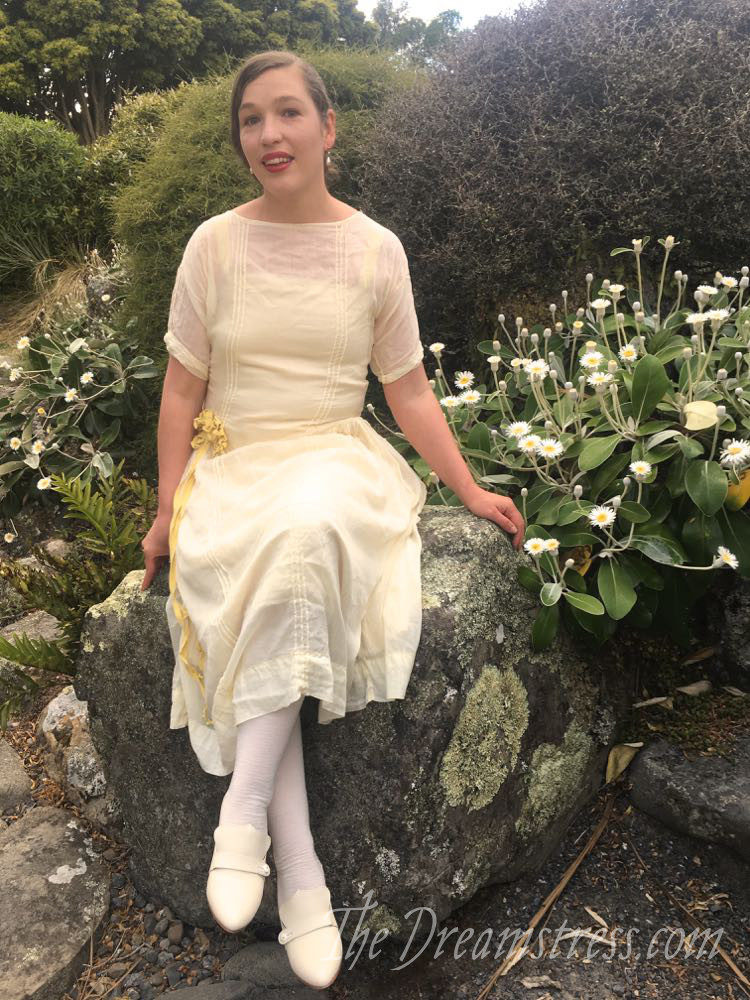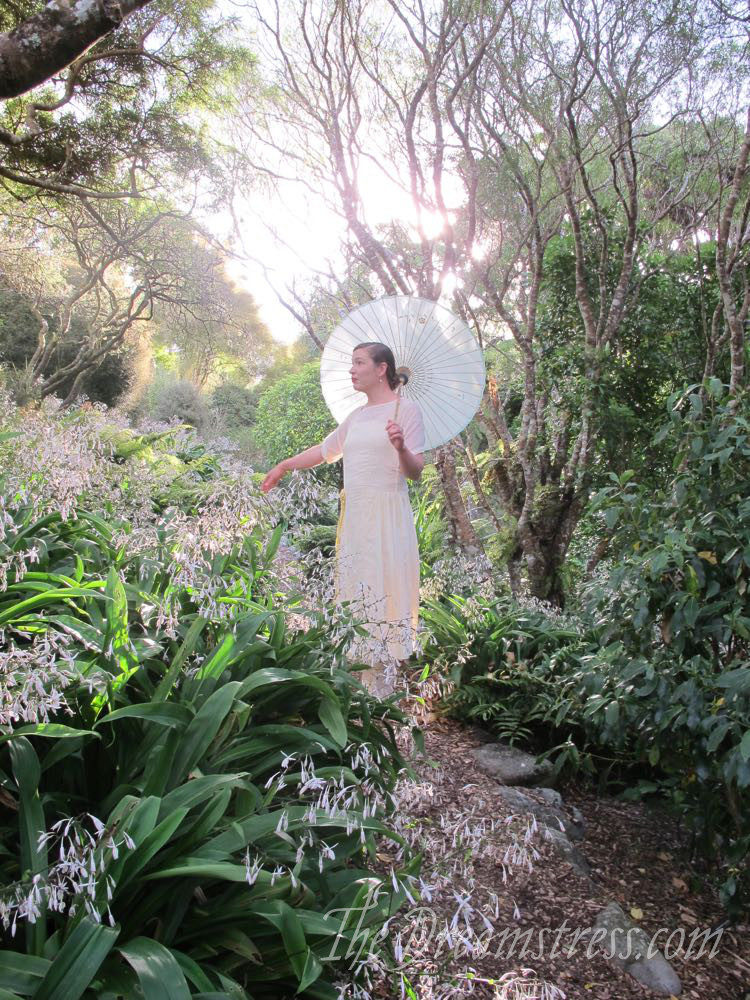My much-anticipated American Duchess Moliere shoes have come in, and I have given them a thorough look-over, and a proper wearing. (Plus a bit of petting and cooing over them). Now I can give you an equally proper review!
My feet:
You might find it helpful to know all about my feet, so you can take that on board when I discuss the Moliere’s fit:
Because there are slight variations in size and shape between brands:
- 65% of my shoes are a size 39 (which is between a US/NZ 8 – 8.5)
- 20% are a US/NZ 8.5 (these are predominantly summer shoes, because my feet swell when its hot)
- 10% are a US/NZ 8
- 5% are a 38
I have very high arches and insteps, and ballerina toes* (my first three toes are exactly the same length). I’m a true B width, with an even width from heel to front. Overall, I have a very standard foot shape.
In general, it is extremely easy for me to find shoes that fit perfectly. I can wear almost anything from a European shoe company, and most American shoe brands. The only problems I ever have with fit are across my instep: some shoes are just designed for flatter feet, and cut across the top of mine.
The Look:
As always with American Duchess, the materials and craftmanship in the shoe are top-notch. The ivory colour is almost more of a bone. It’s a really beautiful neutral for pairing with a whole range of stockings and garments. I love the bone: so much more versatile than white.
The new 2.5″ French heels are phenomenal. They really capture the look of the 1910s-early 20s heel silhouette, while still being sturdy and comfortable enough for modern tastes. I’m totally in love with them on the Molieres and I can’t wait to see what other shoe designs they get used on!
They heels are very easy to walk in. I wandered all around the Native Botanical Gardens at Otari Wiltons Bush, over a variety of terrain, and found them very comfortable.
The only drawback looks-wise to my Molieres were some slight flaws. There were two tiny places on the tongue of one of my shoes where the leather had been nicked, and then shaved and filled to repair it. This causes a bit of wrinkling, and the colour is ever so slightly different as it goes over the textural changes.
I was a bit surprised, as AD is usually obsessive about imperfections. Every other pair I’ve had has been spotless. I’ve even ordered imperfects from then 2x and haven’t been able to find the flaws that got them discounted. The flaws on my Moliere are a tiny bit disappointing, but it’s unlikely that anybody is every going to be looking that closely at my shoe, so c’est la vie.
If I was in the US I might have exchanged them, courtesy of AD’s excellent returns policy. Unfortunately with shipping costs to & from NZ exchanges just aren’t viable.
In any case, no matter how careful I am, I’m bound to get a nick or two in them myself eventually anyway!
The Fit:
I dithered and dithered between an 8 & 8.5 with these shoes. I finally settled on 8.5 because I’m most likely to be wearing ivory shoes with summer outfits. I wanted to be comfortable if my feet were a little swollen, and because I’d primarily be wearing these with merino knit stockings.
They are definitely a bit big for me. I can easily fit my whole thumb behind my merino-stockinged foot when wearing them. This makes them bigger than any of the other 8.5s in my closet. I can still wear and walk in them comfortably, but I’ll definitely be getting an 8 for future pairs (there will be future pairs!)
Part of the reason I have so much room is the width. They are very generous for a B width (oh ye with wider feet, rejoice!). This gives my feet room to slide all the way forward to the front of the shoe. They definitely feel noticeably wider than both my leather & fabric Dunmores (the Dunmores fit me perfectly in an 8.5). The Dunmores are, of course, a different last to the Moliere shoes, but still helpful for comparison purposes.
The width part is probably going to make LOTS of you super happy, so I can’t fault AD there! I just have true B width feet, and prefer a snugger fit, particularly in Edwardian shoes. The whole 1910s shoe asthetic was focused on making your foot look really slender, by elongating the length.
The only tiny thing that is a bit odd about the Moliere’s fit is the height of the sides of the shoe and heel. It’s just the merest smidge short.
I thought maybe I was just over-analysing them at first, or that they felt odd because of my very high arches, so I had a couple of friends with 8-8.5 feet try them on. After squeeing over how gorgeous they are, I asked them what they thought about the fit. All three friends who tried them on independently said they weren’t quite tall enough round the sides and at the back of the heel. It’s not a lot – less than a cm. Just enough to make the difference between a shoe you’d be confident dancing in, and one that might slip off, even if it fits snugly otherwise.
The Verdict:
Despite a few tiny drawbacks, overall I’m very happy with the Moliere shoes. I will definitely be adding the black Molieres to my collection as soon as I can justify it.
* only I never did ballet so my toes are in very good condition 😉

